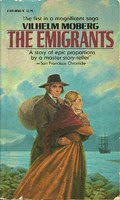In an isolated chateau with a strange old woman and an evil-faced man, Karen found the missing girl. But she (the missing girl) kept insisting, I am Gabriella! I am Gabriella!"
Karen's cousin's name was Maxine. Who was this girl with Maxine's face? And why was she so afraid to admit her true identity? Was it because the man who had murdered to keep them apart as children had returned ... intent to kill again to keep the truth from coming out?
Okay ...
Written in the 1950s by an author of romantic suspense and advertised as a gothic, this book is actually a detective story along the lines of Tommy and Tuppence or Nick and Nora Charles. Anne Maybury's Nick and Karen Arnold actually work together to solve the mystery of the missing girl. There's an old house and some intrigue, but not much else is happening in this story other than a lot of cigarette smoking.
This detective duo is a great departure from the usual set up where the young bride is concerned that her husband might be trying to murder her, although marital distrust is what we have come to expect and love about this genre.
Hmmm ...
I am not sure what the cover summary means when it refers to the person who murdered to keep the girls apart as children? Whatever event orphaned the two girls as children and brought them together as cousins later on played no part in the overall story and was never even suggested as a potential reason for the identity conflict. We can just file this away as cover text "poorly written and completely irrelevant to the story."
To find this book on Amazon: I Am Gabriella







